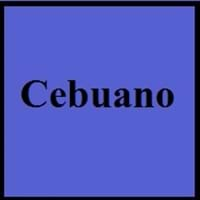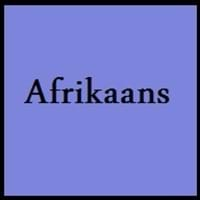Cebuano and Afrikaans
Countries
Philippines
South Africa
National Language
Philippines
South Africa
Second Language
Philippines
Namibia, South Africa
Speaking Continents
Asia
Africa
Minority Language
Not spoken in any of the countries
Botswana, Lesotho, Malawi, Swaziland, Zambia, Zimbabwe
Regulated By
Visayan Academy of Arts and Letters
Die Taalkommissie, National Languages Committee
Interesting Facts
- About one-fifth of the population of the philippines speak cebuano and are second largest ethnolinguistic group in the country.
- Cebuano contains many words of Spanish origin.
- Afrikaans Language is a mixture of English, Dutch, German, French and some South African language like Xhosa.
- Afrikaans Language lacks case and gender distinctions.
Similar To
Hiligaynon Language
Dutch Language
Derived From
Island of Cebu
Dutch Language
Alphabets in
Cebuano-Alphabets.jpg#200
Afrikaans-Alphabets.jpg#200
Writing Direction
Not Available
Left-To-Right, Horizontal
How Are You?
Kumusta man ka?
Hoe gaan dit
Good Night
Maayong Gabii
goeie nag
Good Evening
Maayong Gabii
Goeienaand
Good Afternoon
Maayong Hapon
Goeie middag
Good Morning
Maayong Buntag
goeie more
I Love You
Gihigugma ko ikaw
Ek het jou lief
Excuse Me
Ekskyus mi
Verskoon my
Dialect 1
Boholano
Kaapse Afrikaans
Where They Speak
Bohol
Not Available
Dialect 2
Southern Kana
Oranjeriverafrikaans
Where They Speak
southern Leyte
Not Available
Dialect 3
North Kana
Baster Afrikaans
Where They Speak
northern part of Leyte
Namibia
How Many People Speak?
Not Available
Speaking Population
Not Available
Native Name
Visayan
Afrikaans
Alternative Names
Binisaya, Bisayan, Sebuano, Sugbuanon, Sugbuhanon, Visayan
Cape Dutch
French Name
cebuano
afrikaans
German Name
Cebuano
Afrikaans
Pronunciation
Not Available
[ɐfriˈkɑːns]
Ethnicity
Cebuano people
Afrikaners
Origin
16th century
17th Century
Language Family
Austronesian Family
Indo-European Family
Subgroup
Not Available
Germanic
Branch
Not Available
Western
Early Forms
No early forms
Cape dutch or kitchen dutch
Standard Forms
Standard Cebuano
Standard Afrikaans
Language Position
Not Available
Signed Forms
Not Available
Signed Afrikaans (signs of SASL)
Scope
Individual
Individual
ISO 639 1
No data Available
af
ISO 639 6
Not Available
afrs
Glottocode
cebu1242
afri1274
Linguasphere
No data Available
52-ACB-ba
Language Type
Living
Living
Language Linguistic Typology
Verb-Subject-Object
Subject-Object-Verb
Language Morphological Typology
Not Available
Analytic
All Cebuano and Afrikaans Dialects
Most languages have dialects where each dialect differ from other dialect with respect to grammar and vocabulary. Here you will get to know all Cebuano and Afrikaans dialects. Various dialects of Cebuano and Afrikaans language differ in their pronunciations and words. Dialects of Cebuano are spoken in different Cebuano Speaking Countries whereas Afrikaans Dialects are spoken in different Afrikaans speaking countries. Also the number of people speaking Cebuano vs Afrikaans Dialects varies from few thousands to many millions. Some of the Cebuano dialects include: Boholano, Southern Kana. Afrikaans dialects include: Kaapse Afrikaans , Oranjeriverafrikaans. Also learn about dialects in South American Languages and North American Languages.
Cebuano and Afrikaans Speaking population
Cebuano and Afrikaans speaking population is one of the factors based on which Cebuano and Afrikaans languages can be compared. The total count of Cebuano and Afrikaans Speaking population in percentage is also given. The percentage of people speaking Cebuano language is 0.32 % whereas the percentage of people speaking Afrikaans language is Not Available. When we compare the speaking population of any two languages we get to know which of two languages is more popular. Find more details about how many people speak Cebuano and Afrikaans on Cebuano vs Afrikaans where you will get native speakers, speaking population in percentage and native names.
Cebuano and Afrikaans Language Codes
Cebuano and Afrikaans language codes are used in those applications where using language names are tedious. Cebuano and Afrikaans Language Codes include all the international language codes, glottocodes and linguasphere.





